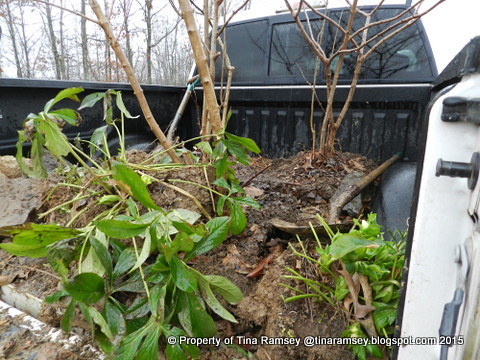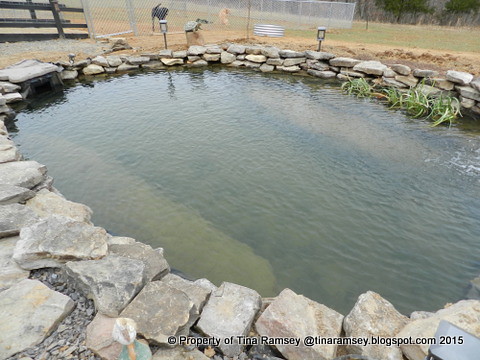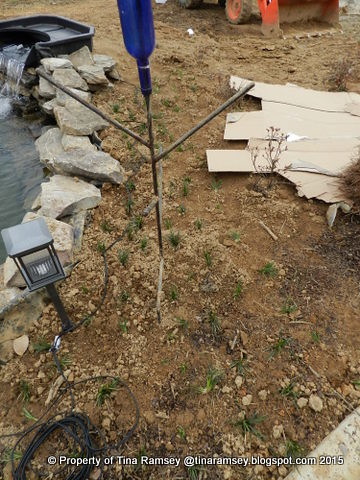BY SKEETER
Yes, I am still here and Yes, I plan to continue to Blog. I have just been backing away from the computer again.
I hope you all had a wonderful Holiday Season and have started your New Year off right. I also hope you are staying warm during this cold winter.
I am here to give you some hope for warm Spring Days to arrive!
The Crocus here in my GEORGIA GARDENS have arrived! I am ever so happy to see them...
Look what else is popping up from the ground! Daffy's and some weeds mingling with Blue Moon Phlox...
Buds are forming on the Bridal Wreath Spirea Bushes...
And I even spotted this small bloom on one Spirea!
Loropetalum or Fringe Bush is starting to show tiny blooms!
And this bush is full of them! I can hardly wait to see this bush in full bloom...
Forsythia is showing some blooms...
With every warm day in winter, this bush always gives me a bloom or two.
Honeysuckle is showing a bloom or two now and then as well.
Something else I spotted, Deer Poop! Some would say good fertilizer for the garden but not so in my case. Bad for my garden as the deer are starting to get into places they have ignored for the past 10 years of me planting on this land.
They have never touched this ground cover which I have turned into a climbing vine. I do not recall the name of this plant but it started out in the bottom container of the Topsy Turvey Pots below. It jumped the container and started going wild so I trained it up the trellis of the swing frame. Notice how there are no leaves on the below vines? This would be the height of the deer. I have caught them in the act more then once this winter...
Lily are popping up and deer are also eating it! Many acres of nearby land has been cleared and building is soon to start on what use to be some of the deer's land. Now it will be turned into a concrete jungle full of houses to support our ever growing county. They call that progress. I call that loosing our surrounding nature...
I spotted this hole in the middle of the Butterfly Bush garden! We suspect the Armadillo which was around for a few weeks to do this damage. Thank Goodness the Armed Bandit moved on to greener pastures... Where is my shovel?
That shovel would be in the shed with new roof. Took us almost a year to replace the Ice Damaged Roof to the shed. We had it covered for the past year with a heavy duty tarp which was brown. The tarp did such a wonderful job that we just ignored that project until a few weeks ago. We liked the brown color more so then the yellow-white of the building thus, the Saint, a neighbor and I installed a brown roof. I am thinking of painting the window trim brown to match. And maybe that bench in front of the trellis as well.
It is still cold out there but as you can see by the Liriope's good shape, it has not been too bad for us here in the Deep South thus far. I am thinking of leaving the grass in place this year as it looks so healthy. I do believe it needs to be thinned a bit though. Time to dig out a bit and place elsewhere. Maybe a good clipping would show the spots to be thinned better. Hummmm...
I cannot believe the deer have not touched this Nandina Bush! They have nibbled the remainder of them. Maybe they took a vote and decided to keep me happy with the beautiful colors of this one! As you can see, THERE'S HOPE FOR SPRING, In the Garden...
Words and Photos Property of In the Garden Blog Team, In the Garden























